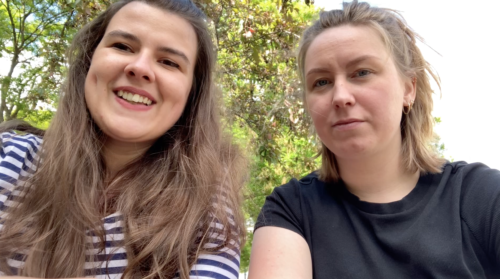How do populations evolve?
A story about natural selection
In this short video, we introduce evolution. We briefly explain what a genotype and a phenotype is, and how they may be different across individuals of the same species.
A group of individuals of the same species are called a population; a population of foxes in a forest, fishes in a lake or moths in a forest. We discuss how different phenotypes of individuals in a population may change over time, and tell a story about the evolution of population of the peppered moth, a famous example of natural selection.
Long time ago a population of mostly light shaded moths, and occasional dark shaded individuals lived in forests in England. The moths frequently rested on light tree trunks in the forest, where the light colored individuals matched the background color of the trunk and the few dark individuals did not. The moths were predated by birds in the forest. The birds did spot the dark moths more easily than the light shaded moths, because they were not as well camouflaged on the light tree trunks as the light moths. Therefore, light colored moths had a higher survival and reproduction chance than dark colored ones. Because of this, the light colored moths were maintained in high number in the population and the dark ones at low number in the population. In the 18 th century, the industrial revolution started and pollution dust made the tree trunks dark. Now the birds could more easily spot the lighter moths on the dark coloured tree trunk, and less the dark one. Therefore the dark moths had higher survival and reproduction chance. This lead to a substential increase of dark colored moths in only a few years. This is an example of natural selection, leading to adaptation of a population.





